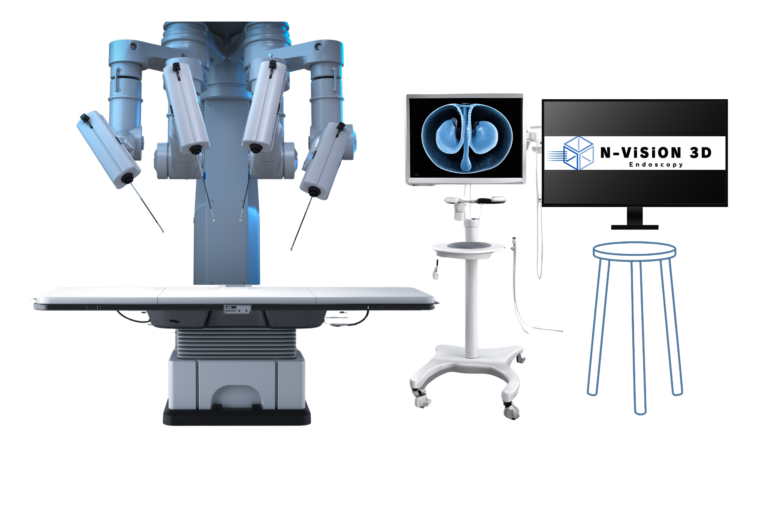Robotic Surgical with Real-time 2D-3D Endoscopy
New perspective on Robotic surgery.
Robotic Surgical combines Real-time2D-3D technology

Novius 3D imaging system does NOT need any glasses-on.
It works with glass-free 3D monitor
Systems are working together without mutual interaction
Our AI software can convert 2D images to 3D in real time, regardless of the endoscope manufacturer or model. Our image processing system converts original 2D images to 3D using a proprietary method and uses the manufacturer’s 2D image system as-is. Therefore, no hardware modifications, additions, or software installation is required; we have designed our system so that the OEM’s 2D images and our 3D images can coexist and operate together.

What does it mean "Two-company co-existence"?
Two-company co-existence means that each company’s system operates independently. Since this is simply an AI programmed process, it has been approved by the Ministry of Health, Labor and Welfare as not requiring approval as a medical device in Japan.
Technology Features
Robotics and 3D Glass-free Display Improve Surgical Accuracy
New perspective on Robotic surgery.
1) Improved visual clarity
3D view provides the physician with a three-dimensional view of the anatomy of the surgical target and more accurate understanding of depth and positioning.
2) Improved accuracy
Because the robotic arm can operate with high precision, it improves accuracy when performing microscopic surgeries based on 3D models. This allows precise approach to the targeted area while protecting surrounding tissues.
3) Real-time 2D to 3D conversion
Using 3D display, the robotic system can provide real-time 3D feedback during surgery, allowing the surgeon to instantly understand the situation and adjust the progress of the surgery if necessary
4) Team collaboration
3D models can be shared with the entire surgical team, making it easier for different medical professionals to work together from the same visual perspective, facilitating smoother surgical planning and execution.
5) Education and Training
Robotics and 3D visualization can help medical students and residents experience realistic surgical scenarios, accelerating skill acquisition.

